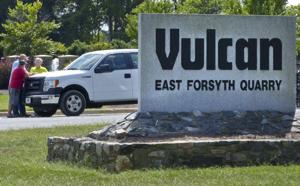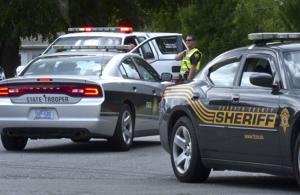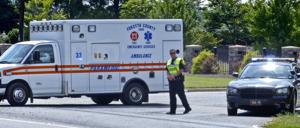Silvaire Luscombe 8A plane similar to the one that crashed
Grandfather, grandson die in Creswell plane crash
Witnesses said the plane burst into flames around 10 a.m.

A small plane crashed shortly after takeoff from an Oregon airport on Labor Day, killing two people.
Witnesses said the plane burst into flames around 10 a.m. Rescuers found it burning in a field near the runway at the Creswell Airport, 15 miles south of Eugene.
The Lane County Sheriff’s Office identified the pilot as 35-year-old Milo Skinner of Springfield and the lone passenger as 83-year-old Hal Skinner of Springfield. Hal Skinner owned the plane his grandson was piloting.
Sheriff’s Lt. Chris Doyle says the aircraft reported engine trouble shortly after takeoff and was trying to return to the airport.
The National Transportation Safety Board identified the two-seat plane as a Silvaire Luscombe 8A.
The airport located east of Interstate 5 is owned and operated by the city of Creswell.
| Date: | 07-SEP-2015 |
| Time: | 10:00 |
| Type: |  Luscombe 8A Silvaire |
| Owner/operator: | Private |
| Registration: | N4948E |
| C/n / msn: | 6388 |
| Fatalities: | Fatalities: 2 / Occupants: 2 |
| Other fatalities: | 0 |
| Airplane damage: | Written off (damaged beyond repair) |
| Location: | Hobby Field Airport (77S), Creswell, OR -
 United States of America United States of America
|
| Phase: | Take off |
| Nature: | Unknown |
| Departure airport: | Hobby Field (77S) |
The aircraft impacted open field terrain shortly after takeoff from Hobby Field Airport (77S), Creswell, Oregon. The airplane was partially consumed by the post-impact fire and the two occupants onboard received fatal injuries. Sources:
http://aviation-safety.net/wikibase/wiki.php?id=179364 http://koin.com/2015/09/07/2-die-in-small-plane-crash-in-creswell/
http://www.kezi.com/news/Plane_Crash_Near_Creswell_Airport.html
http://www.kmtr.com/news/local/SLFR-confirms-two-people-dead-after-plane-crash-near-Creswell--325448131.html?mobile=y
http://registerguard.com/rg/news/local/33481396-75/fatal-plane-crash-at-creswell-airport.html.csp
http://registry.faa.gov/aircraftinquiry/NNum_Results.aspx?NNumbertxt=4948E
N-Number: N4948E
Information Updated 09/02/2015
Aircraft Description
| N-Number | N4948E | ||
| Serial Number | 6388 | Status | Valid |
| Manufacturer Name | SILVAIRE | Certificate Issue Date | 10/27/2011 |
| Model | LUSCOMBE 8A | Expiration Date | 10/31/2017 |
| Type Aircraft | Fixed Wing Single Engine | Type Engine | Reciprocating |
| Pending Number Change | Dealer | ||
| Date Change Authorized | Mode S Code (base 8 / octal) | 51421151 | |
| MFR Year | Mode S Code (base 16 / hex) | A62269 | |
| Type Registration | Individual | Fractional Owner | No |
Registered Owner
| Name | SKINNER HAL W JR | ||
| Street | 5788 E ST | ||
| City | SPRINGFIELD | State | OR |
| County | LANE COUNTY | Zip Code | 97478-6952 |
| Country | US | ||
Airworthiness
Other Owner Names
None| Engine Manufacturer | CONT MOTOR | A/W Date | |
| Engine Model | A&C65 SERIES | Classification | Standard |
| Category | |||







































